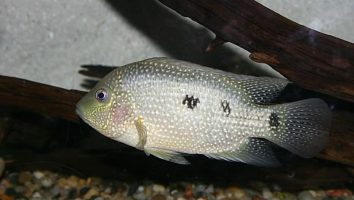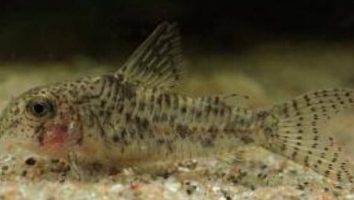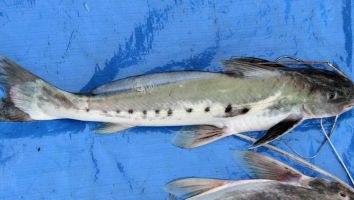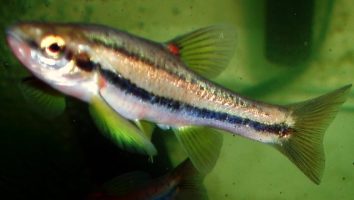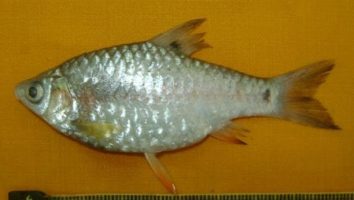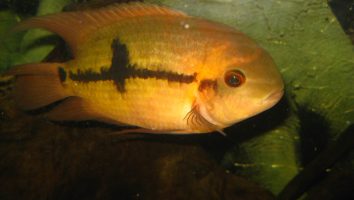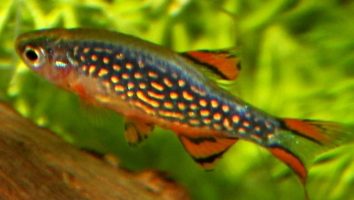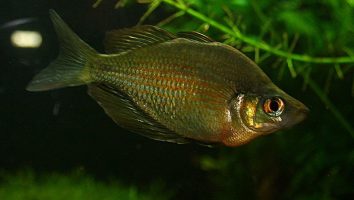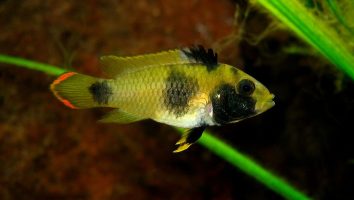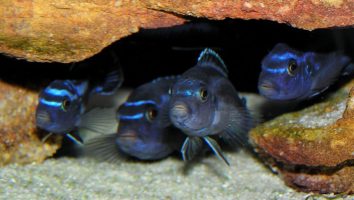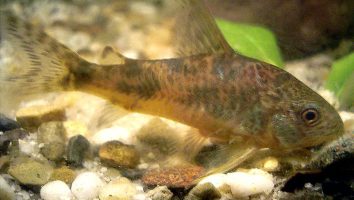The Dwarf Pufferfish is a freshwater fish that is becoming increasingly popular in the aquarium trade.
These pufferfish are relatively easy to care for, and make a great addition to any community tank.
However, there are a few things you need to know about Dwarf Pufferfish care before you add one to your tank.
In this guide, we will go over everything you need to know about Dwarf Pufferfish, from diet and tank mates, to care and breeding.
Table of contents
Species overview
Dwarf pufferfish (Carinotetraodon travancoricus) are small freshwater fish that are found in Kerala, India.
They prefer slow-moving waters with a lot of vegetation, and they are often found in areas with heavy rainfall.
Dwarf pufferfish are very popular in the aquarium trade due to their small size and unique appearance. They are also considered to be one of the easier species of pufferfish to care for.
One of the most important things to remember when caring for dwarf pufferfish is that they are very sensitive to changes in water quality. This means that you need to be extra diligent in your tank maintenance and water changes.
Appearance
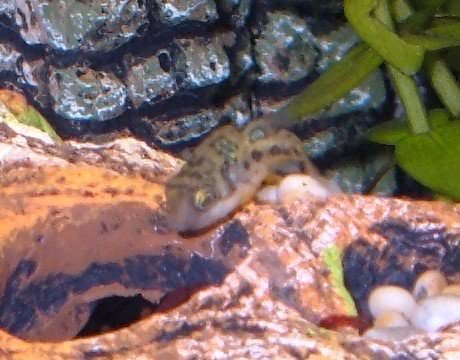
The first thing you’ll notice about this fish is their unique shape. These fish have a round body that’s very short and stocky. This shape gives them a very cute appearance that’s a big part of their appeal.
Their fins are all very small except for their dorsal fin. The dorsal fin is quite tall and triangular in shape. It starts about halfway back on their body and extends almost to the tip of their tail.
The pectoral fins on these fish are very small and sit close to their bodies. Their ventral fins are also quite small and sit just behind their pectoral fins.
The caudal fin of the Dwarf Pufferfish is also small, but it’s very wide. This gives them a lot of power when swimming in short bursts.
The eyes on these fish are very large in comparison to their body size. This gives them excellent vision and they’re very good at spotting potential prey.
The mouth of the Dwarf Pufferfish is also quite large. They have a beak-like mouth that’s perfect for crushing the shells of their prey.
These fish are covered in small scales that have a unique texture. The scales are very hard and have a rough feel to them.
Lifespan
Dwarf pufferfish have a lifespan of 3-5 years in captivity, though some have been known to live up to 8 years.
Size
A Dwarf Pufferfish can grow to be about 1.5 inches in length when fully grown.
Tank
Tank Size
The minimum tank size for a dwarf pufferfish is 5 gallons. This is assuming you’re only keeping one fish and don’t plan on adding any tank mates.
If you want to keep more than one pufferfish in the same tank you’ll need to increase the size of the tank accordingly. We recommend adding at least 2 to 3 gallons per additional fish.
Water Parameters
The ideal pH range for a dwarf pufferfish is between 6.5 and 7.5. The ideal water hardness is between 4 and 8 dGH. The ideal water temperature is between 75 and 80 degrees Fahrenheit.
The most important thing to remember when it comes to their water parameters is consistency. Even though these are very hardy fish, they can be sensitive to sudden changes just like any other freshwater species.
Even though they’re still a bit more durable in this regard, you should use this as practice. Challenge yourself to see how consistent you can keep the water parameters and how easily you can make an adjustment if needed. These skills will come in handy with other species you keep in the future!
- Water Temperature: 75°F to 80°F
- pH Levels: 6.5 to 7.5
- Water Hardness: 4 to 8 dGH
- Alkalinity Levels: 4-8 dKH
What To Put In Their Tank
When it comes to setting up the interior of their tank there are a few things you’ll want to keep in mind.
The first is that these fish like to have a lot of places to hide. This can be in the form of plants, caves, or even just a bunch of rocks arranged in a certain way.
The second is that they love to eat. A lot. So you’ll want to make sure there’s plenty of food for them to munch on.
And the third is that they’re pretty small, so you don’t need a ton of space for them.
When it comes to the substrate, we recommend something soft and sandy. This will be more comfortable for their little bellies and less likely to injure them if they decide to go on a digging spree.
As for plants, anything that can rooted in the substrate is a good choice. Just be sure to leave some space for them to swim around!
And finally, rocks and caves are a must. Arrange them in a way that provides plenty of hiding spots and you’ll be good to go.
Common Diseases
Dwarf pufferfish are relatively hardy creatures, but that doesn’t mean they’re immune to disease. Poor water quality is the number one cause of sickness in these fish, so it’s important to keep a close eye on your tank conditions.
The most common disease you’ll see in dwarf pufferfish is ich. This is a parasite that manifests as white spots on the body of your fish. It’s important to treat this quickly, as it can be fatal if left untreated.
Other common illnesses include infections, fungus, and various parasites. As with ich, it’s important to treat these quickly to give your fish the best chance of recovery.
The best way to prevent your dwarf pufferfish from getting sick is to maintain a high quality of water in their tank. Regular water changes and using a good filter will go a long way in keeping your fish healthy and disease-free.
Behavior & Temperament
Dwarf pufferfish are one of the most popular freshwater aquarium fish for a reason: they’re absolutely adorable. But they’re not just a pretty face. They’re also interesting, unique, and relatively easy to care for.
Dwarf pufferfish are known to be a bit feisty. They’re not the most aggressive fish in the world, but they can hold their own against other fish that try to pick on them. They’re not afraid to use their beak-like mouths to take a chunk out of another fish if they feel threatened.
However, they can also be very peaceful. It really depends on their personality and the environment they’re in. If they’re in a tank with other fish that leave them alone, they’ll likely be fine.
Dwarf pufferfish are also known to be escape artists. They’re good jumpers and can squeeze through small spaces. So, it’s important to have a tight-fitting lid on your tank.
Tank Mates
When it comes to dwarf pufferfish, there are a few things you need to take into account. First, these fish are known to be aggressive. They’re also known to be escape artists. As a result, their tank mates need to be able to hold their own.
That being said, there are a few species that work well. Here are some examples:
- Mollies
- Platies
- Swordtails
- Guppies
- Endler’s Livebearers
- Pygmy Corydoras
- Otocinclus Catfish
- Cherry Shrimp
- Amano Shrimp
Breeding
Dwarf pufferfish are one of the easier species of pufferfish to breed in captivity. They’re also one of the most rewarding, as they’re quite beautiful fish.
The first step is to set up a breeding tank. It should hold at least 10 gallons of water and be heavily planted. Pufferfish like to have a lot of places to hide, so make sure there are plenty of caves and hiding spots.
You’ll also need to add a sponge filter. Pufferfish are notorious for getting into trouble, and you don’t want your fry getting sucked into the filter!
When ready, add two males and two females to the tank. Pufferfish are polygamous, so each male will mate with both females.
The next step is to wait. Pufferfish have a very long gestation period, so it can take up to two months for the eggs to hatch.
When they finally do hatch, the fry will be very small. You’ll need to feed them live foods, such as brine shrimp or daphnia.
As they grow, you can start to add frozen or freeze-dried foods to their diet. Just make sure to crush them up into small pieces.
Pufferfish are notoriously difficult to care for, so make sure you do your research before you decide to breed them.
Conclusion
Overall, we think that Dwarf Pufferfish are a great addition to any freshwater tank. They’re beautiful fish that are a joy to watch and are relatively easy to care for.
Of course, there are some things you need to be aware of before you get one, but we think that’s the case with any fish.
If you’re looking for a new fish to add to your tank, we highly recommend the Dwarf Pufferfish!

